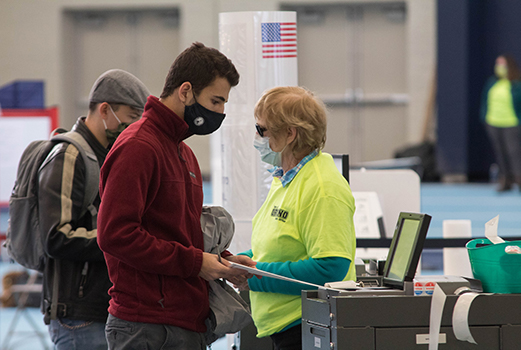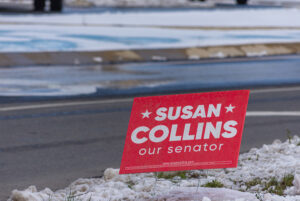After the 2016 polling debacle where every national poll in the country forecasted Hillary Clinton to lead Donald Trump in the presidential race by anywhere from one to five percentage points, Americans were much more cautious to trust the polls during this election.
Although polls in 2020 appear to have been much closer to the mark than they were in 2016, they were still inaccurate in some important ways.
“The polls largely indicated a Democratic sweep with former Vice President Joe Biden up an average of 7.4 percentage points ahead of President Donald Trump in national polls…” Lauren Feiner of CNBC explained.
However, this election proved to be a much closer race than predicted. One example of this discrepancy between results and polls was where RealClearPolitics suggested Biden would win Wisconsin by 6.7 points, but preliminary results show his lead was less than a percentage point above Trump. Additionally, many polls inaccurately had Florida going to Biden, although Trump ended up winning the state by over three points.
In the 2020 Senate race, Mainers saw firsthand the unpredictability of voting patterns. Polls from the Bangor Daily News to the New York Times had Speaker of the Maine House of Representatives Democrat Sara Gideon leading Republican incumbent U.S. Sen. Susan Collins by one to 12 points. The Bangor Daily News had Gideon with a one point lead, the New York Times called it a five point lead, Colby College estimated a four point lead and most shockingly Quinnipiac suggested a 12 point lead for Gideon.
With the results calculated, Collins declared victory with an 8.8 point lead. Collins won with 51.1% of the vote which meant the race was decided within round one of ranked-choice voting, which many Mainers did not see coming.
Ballot splitting was a key to the victory of Senator Collins, who pulled off over an eight point lead in Maine, while Democrat Presidential Candidate Joe Biden had a ten point lead. Ballot splitting occurs when a voter votes for more than one candidate for different political positions from different political parties. These results are a far cry from the outcome of the Pew Research Center’s poll that predicted a large share of voters plan to vote straight party ticket for president, Senate and House.
“In an era of increasing partisanship, split-ticket voting continues to be rare in U.S. politics. With control of the Senate at stake on Nov. 3, just 4% of registered voters in states with a Senate contest say they will support Donald Trump or Joe Biden and a Senate candidate from the opposing party. A recent analysis of U.S. Senate elections since 2012 shows how rare it is for a Senate race to go a different way from a state’s votes in presidential elections. In 139 regular and special elections for the Senate since 2012, 88% have been won by candidates from the same party that won that state’s most recent presidential contest,” the Pew Research Center reports.
Hopefully, the ability for Mainers to participate in the bipartisan act of splitting their ticket against all odds is foreshadowing a much-needed shift back to bipartisanship and compromise in Washington.














